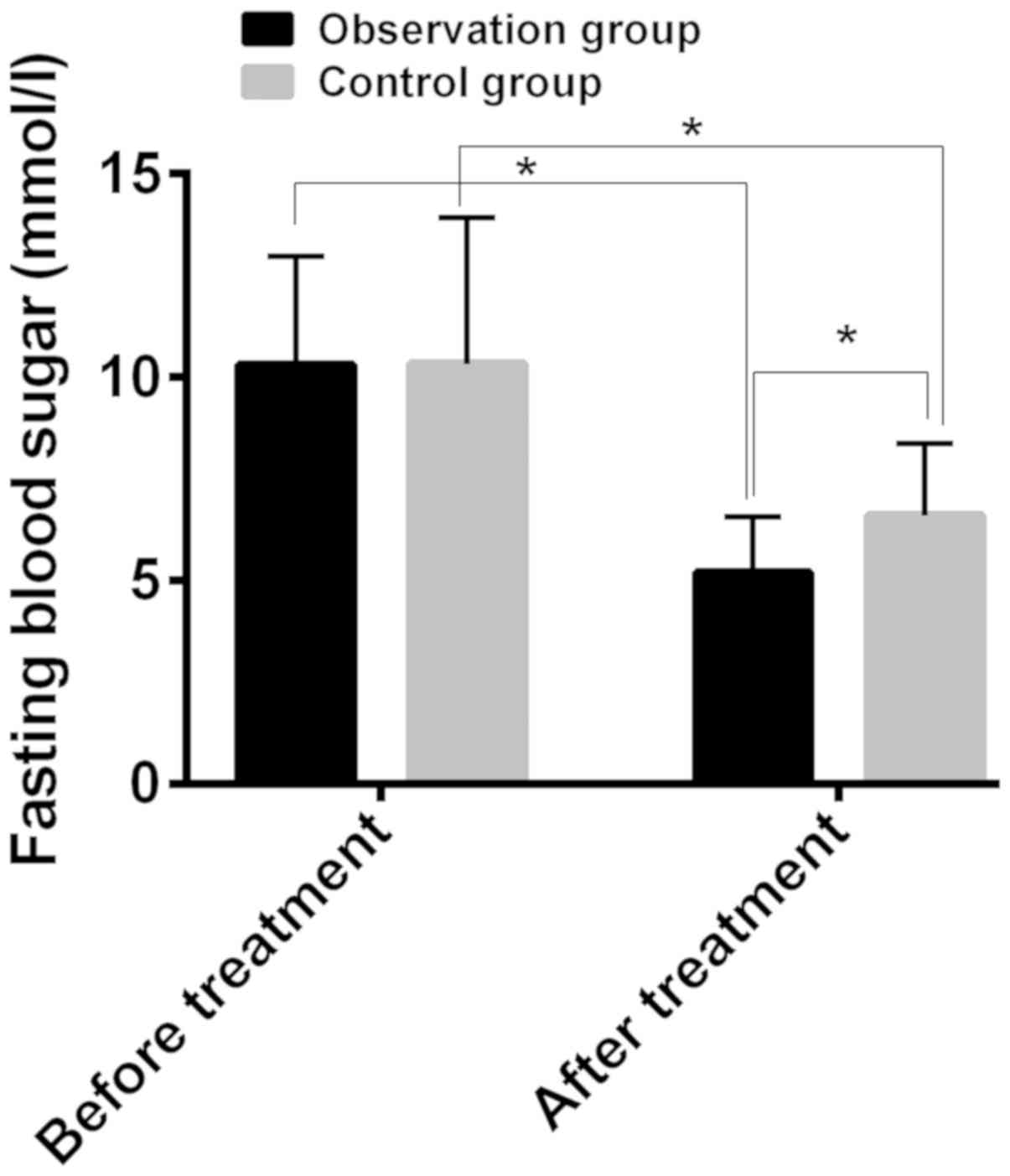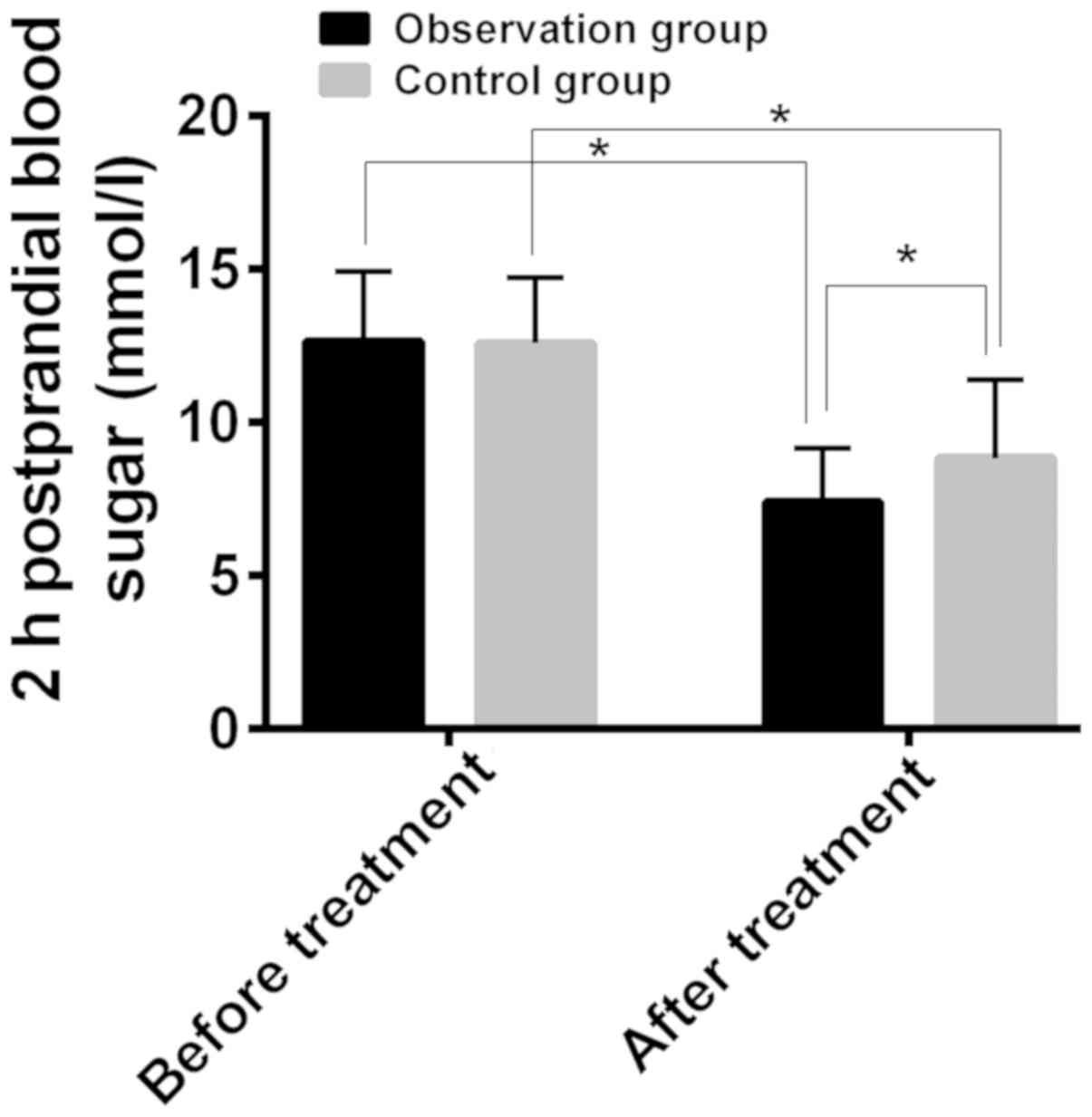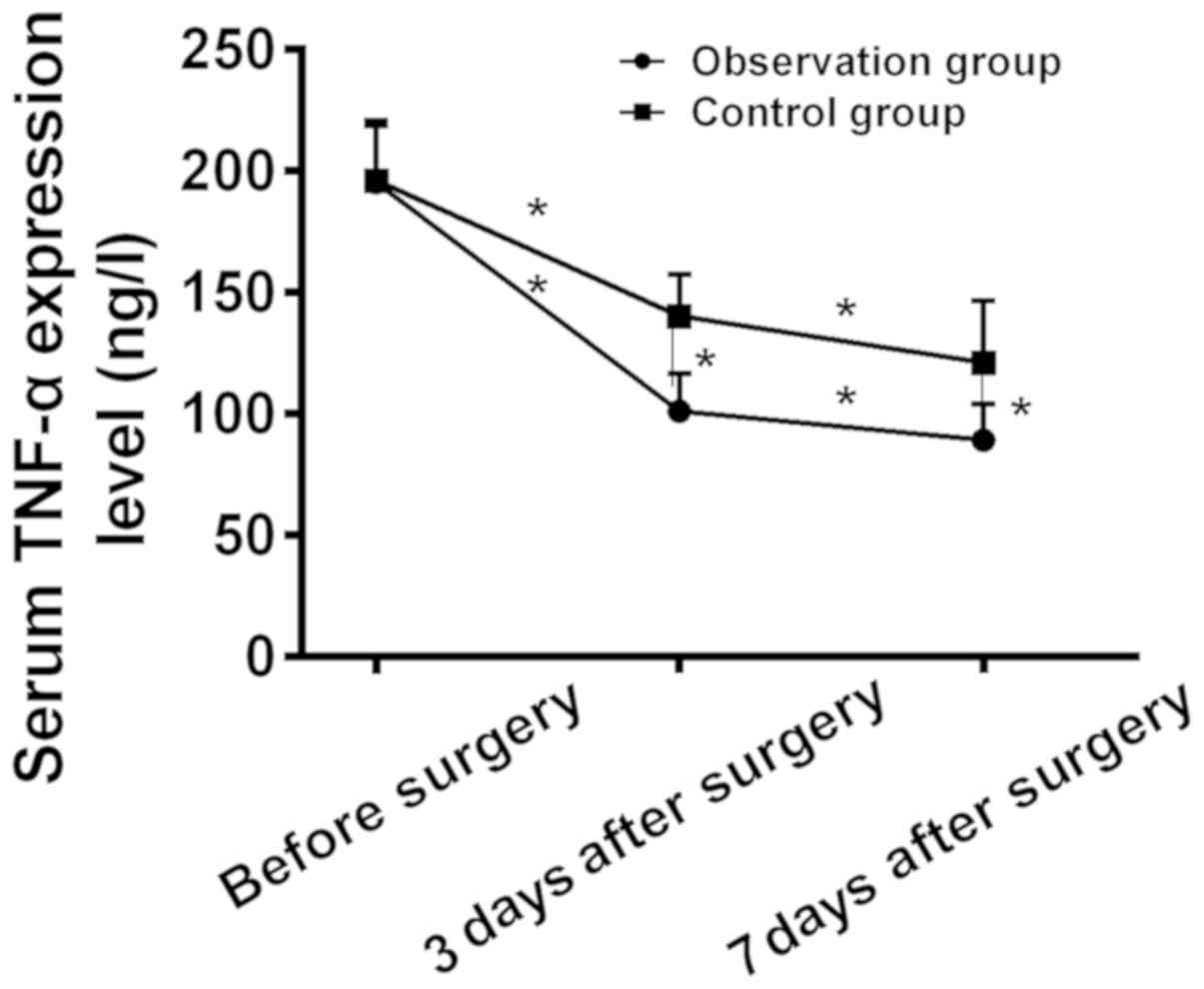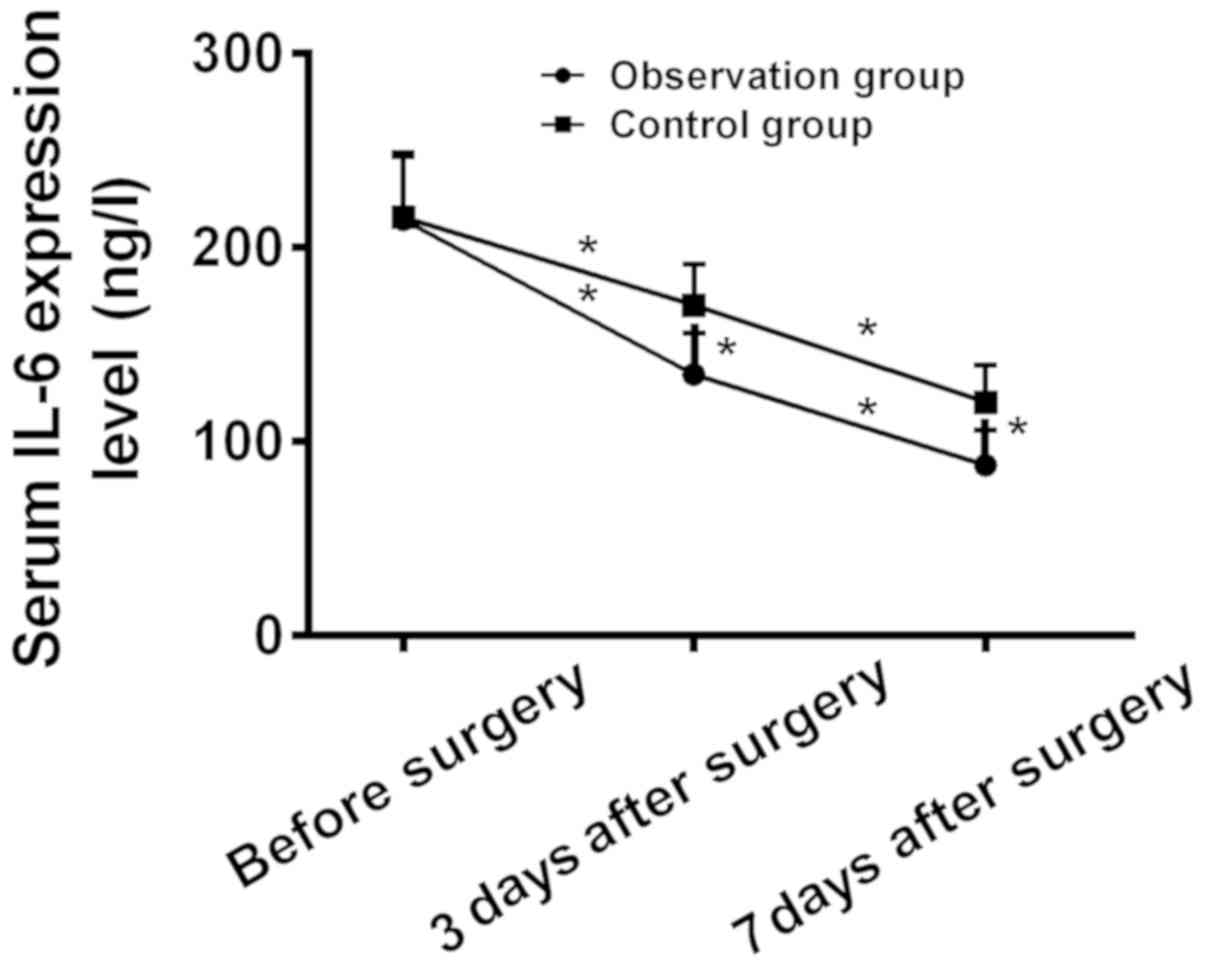|
1
|
Dabelea D and Pettitt DJ: Intrauterine
diabetic environment confers risks for type 2 diabetes mellitus and
obesity in the offspring, in addition to genetic susceptibility. J
Pediatr Endocrinol Metab. 14:1085–1091. 2001. View Article : Google Scholar : PubMed/NCBI
|
|
2
|
Kirkman MS, Mahmud H and Korytkowski MT:
Intensive blood glucose control and vascular outcomes in patients
with type 2 diabetes mellitus. Endocrinol Metab Clin North Am.
47:81–96. 2018. View Article : Google Scholar : PubMed/NCBI
|
|
3
|
Pasek RC and Gannon M: Advancements and
challenges in generating accurate animal models of gestational
diabetes mellitus. Am J Physiol Endocrinol Metab. 305:E1327–E1338.
2013. View Article : Google Scholar : PubMed/NCBI
|
|
4
|
Hanada M, Furuya T, Sugito K, Ohashi K,
Ikeda T, Koshinaga T, Kawashima H, Inoue M, Hosoda T and Goto H:
Evaluation of the efficacy of incision and drainage versus
hainosankyuto treatment for perianal abscess in infants: A
multicenter study. Surg Today. 45:1385–1389. 2015. View Article : Google Scholar : PubMed/NCBI
|
|
5
|
Hu Y: Advances in reducing cardiovascular
risk in the management of patients with type 2 diabetes mellitus.
Chronic Dis Transl Med. 5:25–36. 2019. View Article : Google Scholar : PubMed/NCBI
|
|
6
|
Murphy R, Tsai P, Jüllig M, Liu A, Plank L
and Booth M: Differential changes in gut microbiota after gastric
bypass and sleeve gastrectomy bariatric surgery vary according to
diabetes remission. Obes Surg. 27:917–925. 2017. View Article : Google Scholar : PubMed/NCBI
|
|
7
|
Fransgaard T, Thygesen LC and Gögenur I:
Metformin increases overall survival in patients with diabetes
undergoing surgery for colorectal cancer. Ann Surg Oncol.
23:1569–1575. 2016. View Article : Google Scholar : PubMed/NCBI
|
|
8
|
Pieber TR, Draeger E, Kristensen A and
Grill V: Comparison of three multiple injection regimens for Type 1
diabetes: Morning plus dinner or bedtime administration of insulin
detemir vs. morning plus bedtime NPH insulin. Diabet Med.
22:850–857. 2005. View Article : Google Scholar : PubMed/NCBI
|
|
9
|
Yki-Järvinen H and Kotronen A: Is there
evidence to support use of premixed or prandial insulin regimens in
insulin-naive or previously insulin-treated type 2 diabetic
patients? Diabetes Care. 36 (Suppl 2):S205–S211. 2013. View Article : Google Scholar : PubMed/NCBI
|
|
10
|
Ding L, Sousa KM, Jin L, Dong B, Kim BW,
Ramirez R, Xiao Z, Gu Y, Yang Q, Wang J, et al: Vertical sleeve
gastrectomy activates GPBAR-1/TGR5 to sustain weight loss, improve
fatty liver, and remit insulin resistance in mice. Hepatology.
64:760–773. 2016. View Article : Google Scholar : PubMed/NCBI
|
|
11
|
Gijsbers L, Ding EL, Malik VS, de Goede J,
Geleijnse JM and Soedamah-Muthu SS: Consumption of dairy foods and
diabetes incidence: A dose-response meta-analysis of observational
studies. Am J Clin Nutr. 103:1111–1124. 2016. View Article : Google Scholar : PubMed/NCBI
|
|
12
|
Machida T, Ohta S, Kakimoto Y, Toyoda A,
Endou Y and Murakami O: A case of rectal cancer presenting with
perianal abscess. Gan To Kagaku Ryoho. 46:88–90. 2019.(In
Japanese). PubMed/NCBI
|
|
13
|
Pearce L, Newton K, Smith SR, Barrow P,
Smith J, Hancock L, Kirwan CC and Hill J; North West Research
Collaborative, : Multicentre observational study of outcomes after
drainage of acute perianal abscess. Br J Surg. 103:1063–1068. 2016.
View Article : Google Scholar : PubMed/NCBI
|
|
14
|
Mohammadi MH, Molavi B, Mohammadi S,
Nikbakht M, Mohammadi AM, Mostafaei S, Norooznezhad AH, Ghorbani
Abdegah A and Ghavamzadeh A: Evaluation of wound healing in
diabetic foot ulcer using platelet-rich plasma gel: A single-arm
clinical trial. Transfus Apheresis Sci. 56:160–164. 2017.
View Article : Google Scholar
|
|
15
|
Xanthoulea S, Deliaert A, Romano A, Rensen
SS, Buurman WA and van der Hulst RR: Nicotine effect on
inflammatory and growth factor responses in murine cutaneous wound
healing. Int Immunopharmacol. 17:1155–1164. 2013. View Article : Google Scholar : PubMed/NCBI
|
|
16
|
Huang W, Liu YS, Wang YJ, Long LM, Li X,
Wang Y and Yang Y: A comparison of efficacy and safety in the
treatment of hyperglycemia with continuous subcutaneous insulin
with insulin pump or multiple insulin injections daily in critical
elderly patients. Zhongguo Wei Zhong Bing Ji Jiu Yi Xue.
20:546–549. 2008.(In Chinese). PubMed/NCBI
|
|
17
|
Conget I, Castaneda J, Petrovski G, Guerci
B, Racault AS, Reznik Y, Cohen O, Runzis S, de Portu S and Aronson
R; OpT2mise Study Group, : The impact of insulin pump therapy on
glycemic profiles in patients with type 2 diabetes: Data from the
OpT2mise Study. Diabetes Technol Ther. 18:22–28. 2016. View Article : Google Scholar : PubMed/NCBI
|
|
18
|
Soedamah-Muthu SS and de Goede J: Dairy
consumption and cardiometabolic diseases: Systematic review and
updated meta-analyses of prospective cohort studies. Curr Nutr Rep.
7:171–182. 2018. View Article : Google Scholar : PubMed/NCBI
|
|
19
|
Lin ZQ, Dong YZ, Zhang XD, Wang T, Sun KL
and Niu WY: Effect of interleukin-6 on gene expression of certain
cytokines during wound healing process of mouse skin. Yi Chuan Xue
Bao. 32:46–51. 2005.(In Chinese). PubMed/NCBI
|
|
20
|
Zobel K, Martus P, Pletz MW, Ewig S,
Prediger M, Welte T and Bühling F; CAPNETZ study group, :
Interleukin 6, lipopolysaccharide-binding protein and interleukin
10 in the prediction of risk and etiologic patterns in patients
with community-acquired pneumonia: Results from the German
competence network CAPNETZ. BMC Pulm Med. 12:1–10. 2012. View Article : Google Scholar : PubMed/NCBI
|
|
21
|
Borgatti M, Mazzitelli S, Breveglieri G,
Gambari R and Nastruzzi C: Induction by TNF-α of IL-6 and IL-8 in
cystic fibrosis bronchial IB3-1 epithelial cells encapsulated in
alginate microbeads. J Biomed Biotechnol. 2010:9079642010.
View Article : Google Scholar : PubMed/NCBI
|
|
22
|
Hanson MA and Gluckman PD: Early
developmental conditioning of later health and disease: Physiology
or pathophysiology? Physiol Rev. 94:1027–1076. 2014. View Article : Google Scholar : PubMed/NCBI
|


















